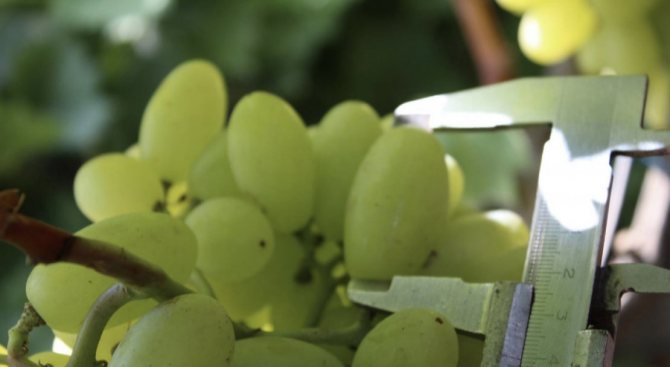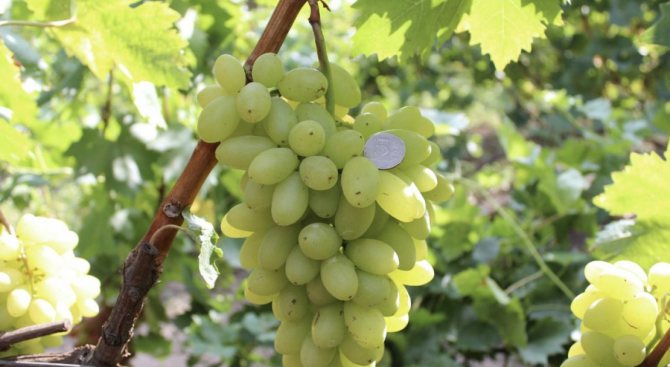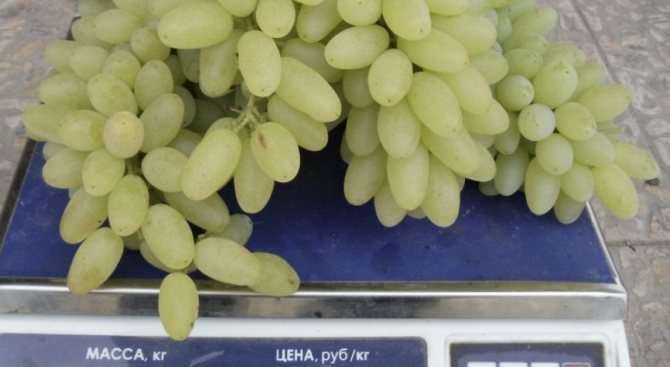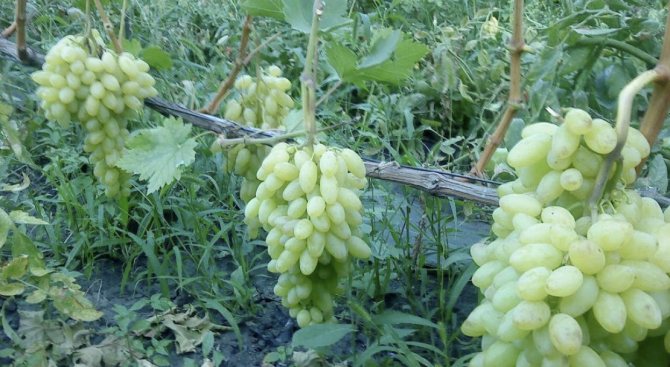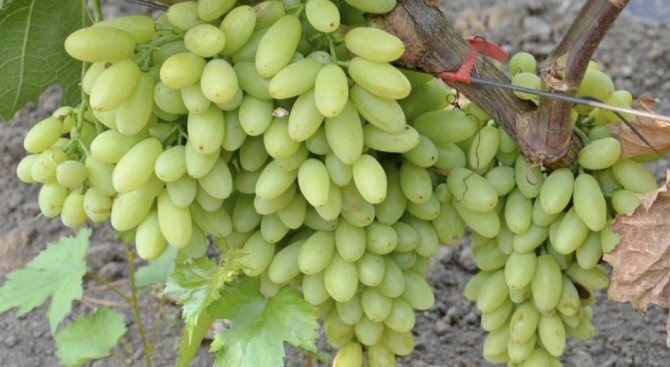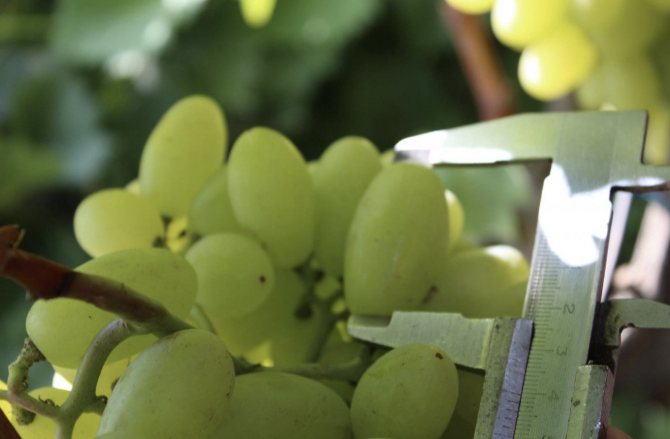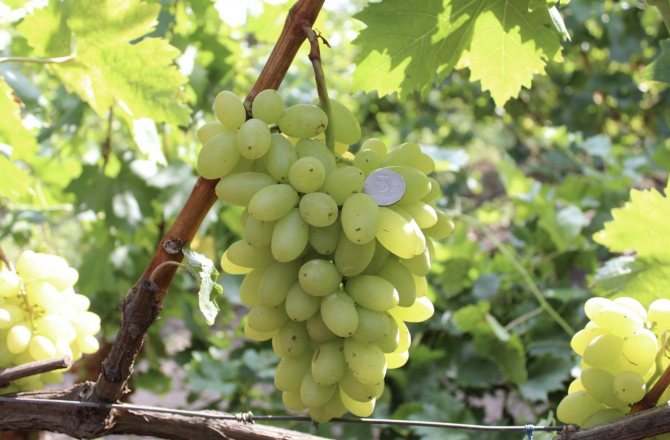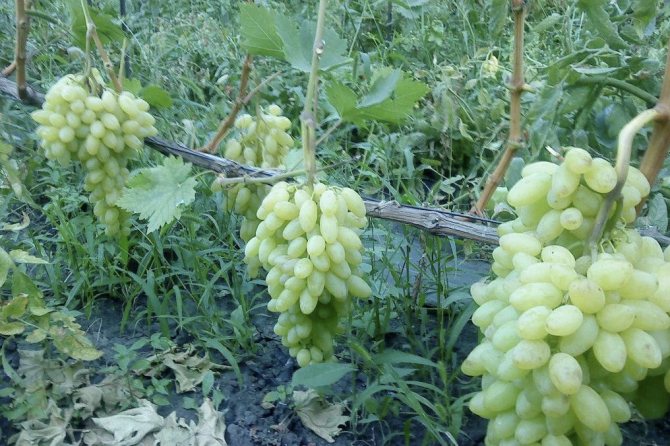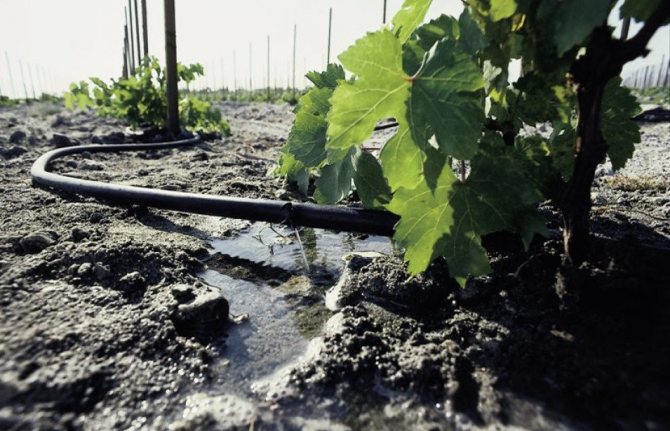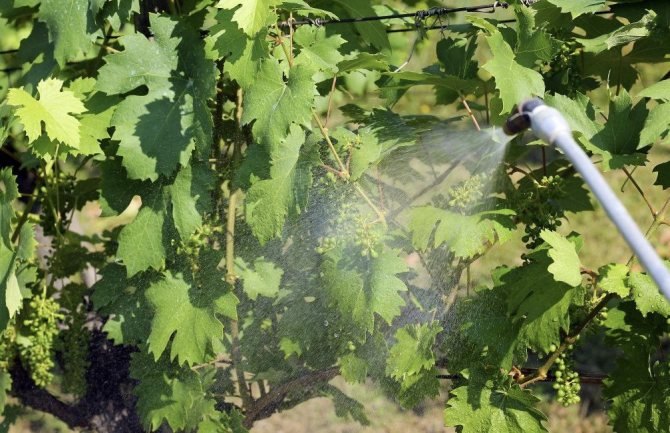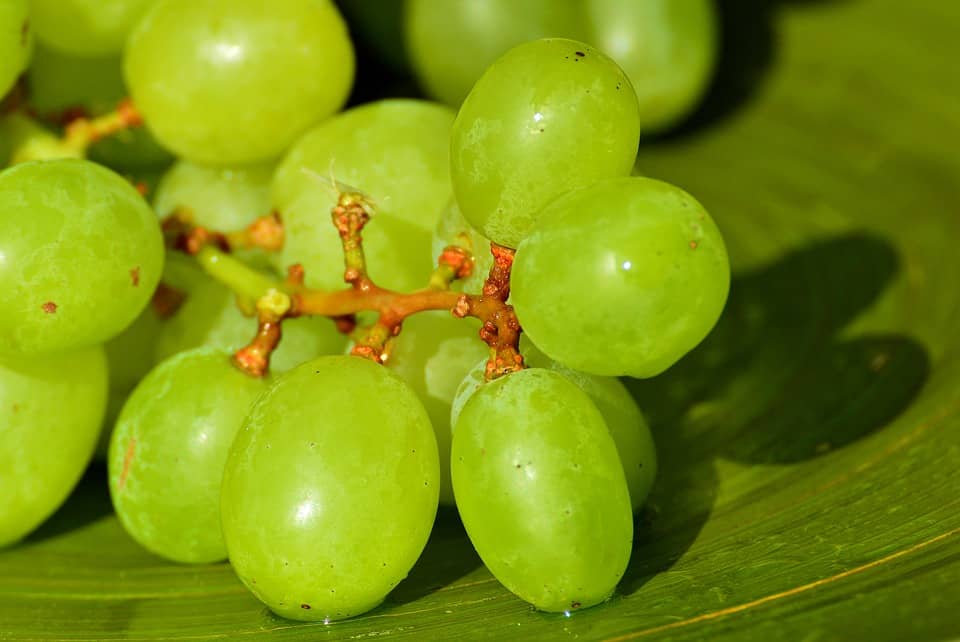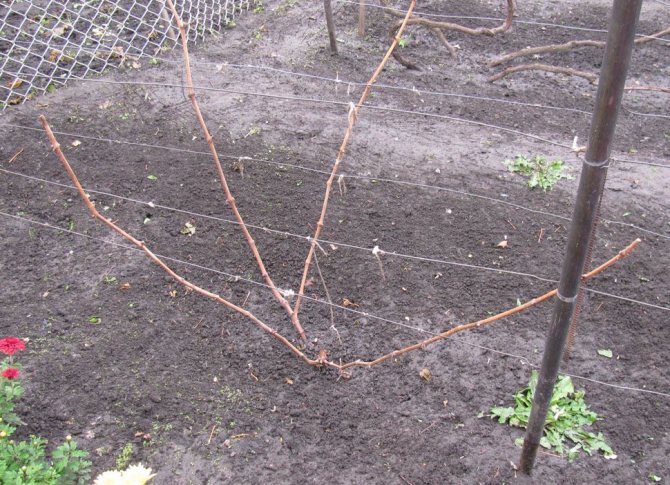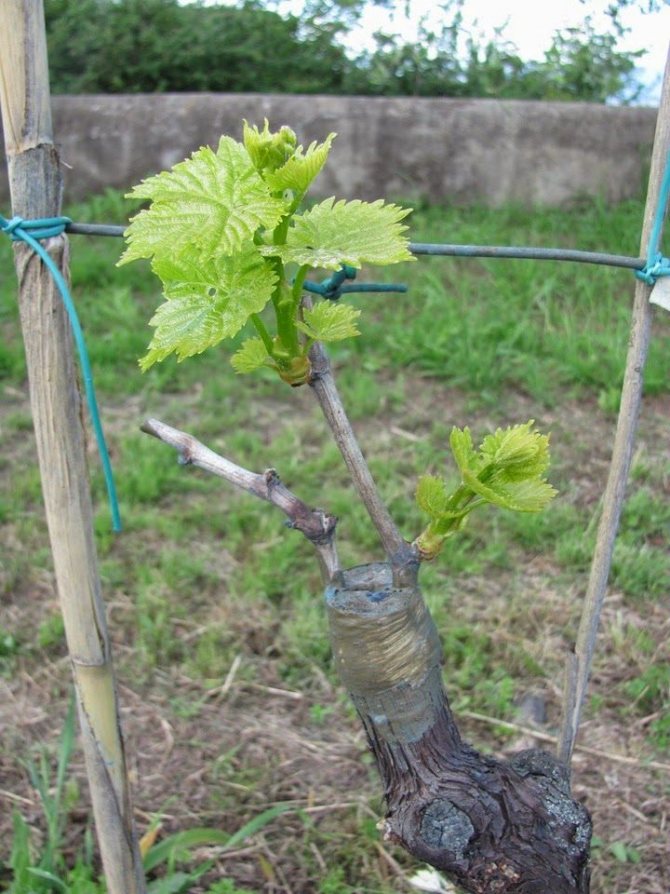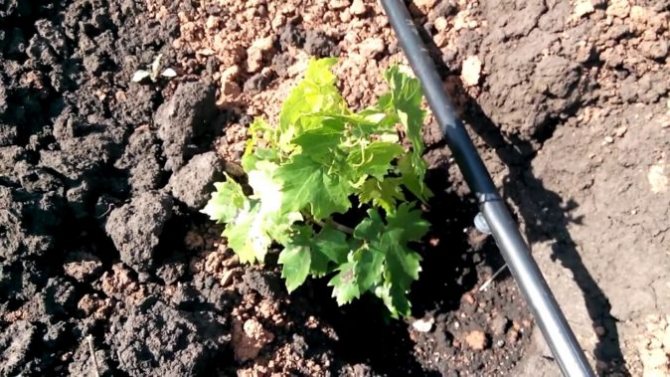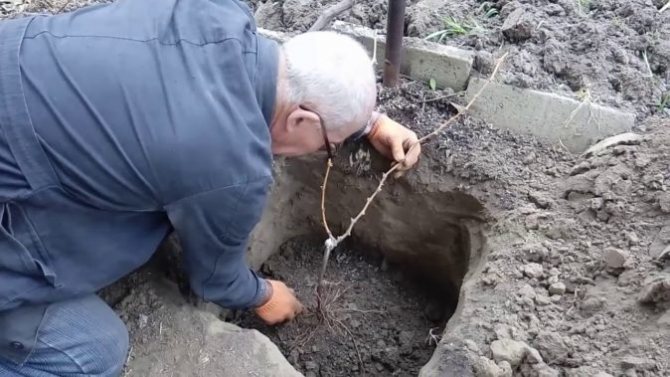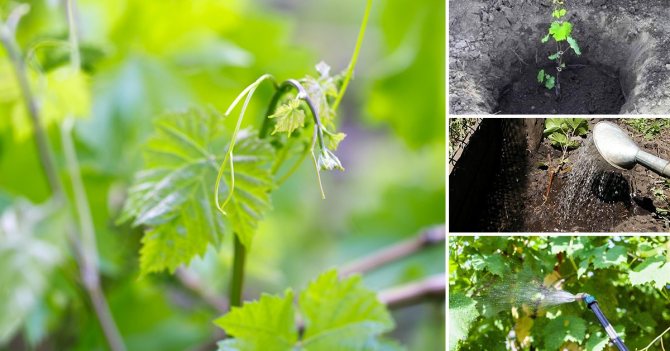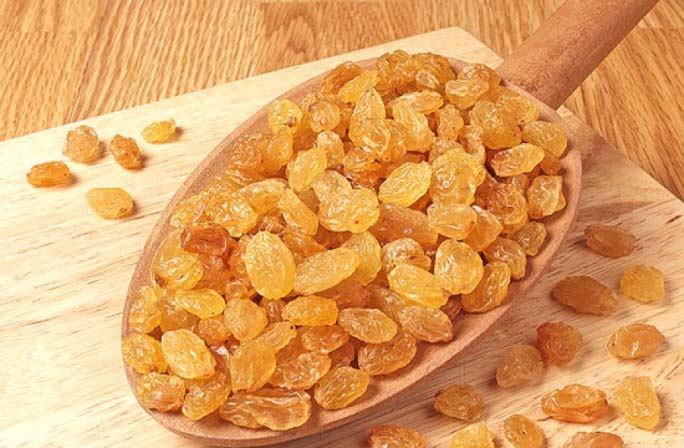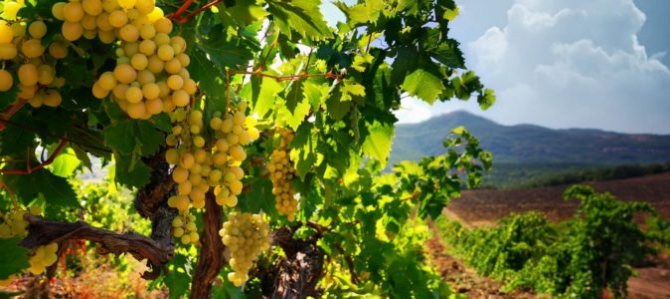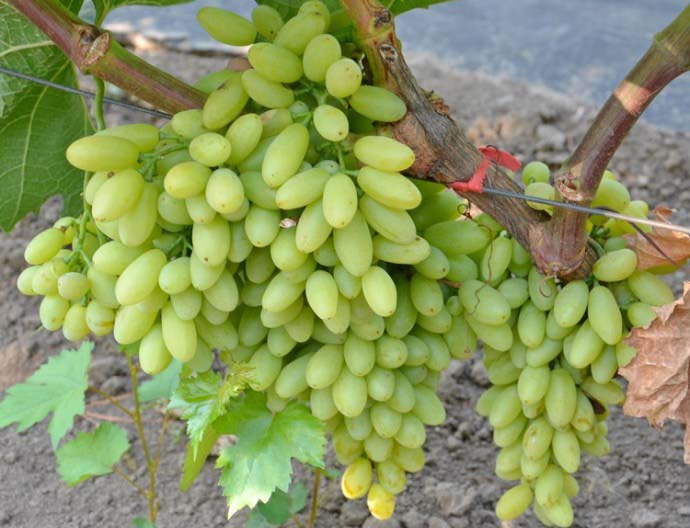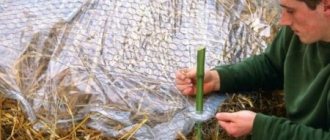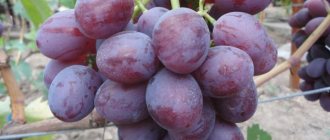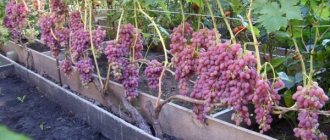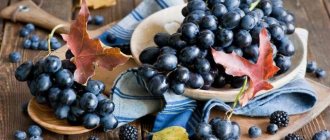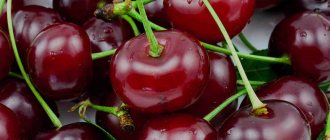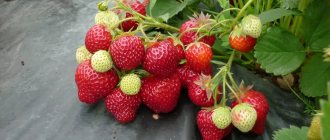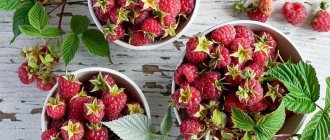Description
In 1966, in the United States in the state of California, a new grape variety was the result of crossing Gold x Q25-6 vines (Emperor x Pirovano 75). The variety was officially registered only in 1980. The new grape was named "Centennial Seedless", or "centennial seedless." In Russia, the variety became widely known after 2010 under the name "century". Another worthy representative of raisins from the USA is "Jupiter".
Below you will find a description and main characteristics of the "century" variety, as well as photos and reviews about it.
Advantages of the variety:
- Complete lack of bone.
- Rich balanced taste.
- The berries do not crumble or crack.
- Good rooting and survival rate.
- High productivity.
- Early ripening.
Disadvantages:
- The need to thin out clusters for their uniform development.
- Not suitable for long-term storage.
- Possesses medium resistance to fungal diseases.
- Defenseless against phylloxera.
- Non-frost-resistant.
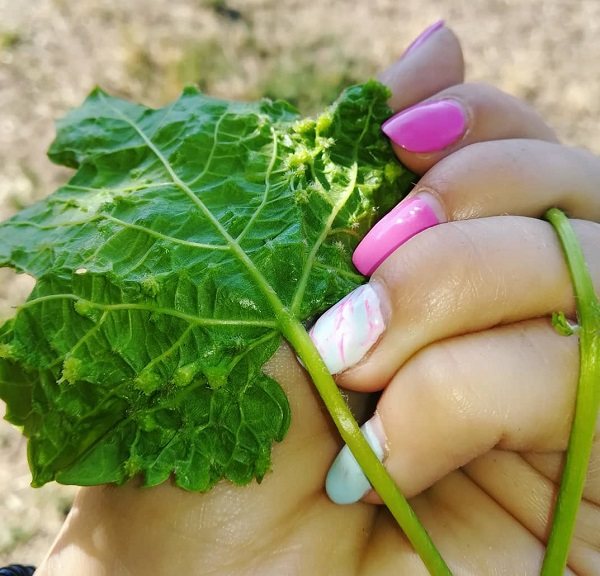
Phyloxera is the main enemy of the "century"
Summing up
- Century is a seedless grape of American selection. It was withdrawn back in the 80s of the last century, but it has become popular in the CIS countries only now.
- It is from this variety that the most delicious and high-quality raisins are made.
- In care, the Century is unpretentious and does not require a lot of work of the grower, with the exception of thinning the bunches.
- It can grow not only in the southern, but also in cooler regions.
- The taste qualities of the grapes are assessed as high.
- The berries themselves are large and beautiful, they make a wonderful raisin, which is very highly valued.
- Ripening periods are average, usually four months pass from the first buds to the mature harvest.
Main characteristics
The main characteristics of the "century" variety include: ripening time, bush shape, bunches, berries and taste.
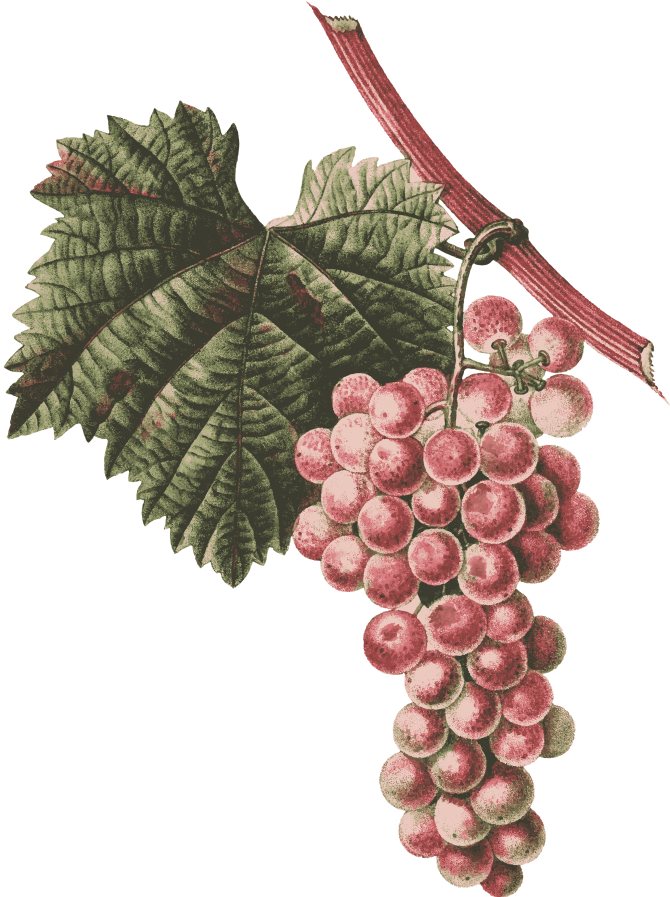

Reference! If there is a question of "compactness of the bush", the vine is grown on a rootstock.
Ripening terms
Grape "century" refers to early maturing varieties. Its berries are gaining ripeness within 125-130 days after bud break. But a prerequisite for such an early ripening should be a fairly warm climate with a total average daily temperature of 2600 ° C. The vine begins to actively bear fruit in the third year after planting.
Bush shape
The "century" bush, obtained from the cuttings, is strong and wide, growing rapidly. He definitely needs support, since he can grow to a height of several meters in the first year after planting.
Bunches and berries
Bunches of grapes are cone-shaped, full, massive. The weight of one bunch is on average 400-500g, but it can weigh even more than a kilogram, 1200-1400g.
Berries "century" oblong have the shape of an elongated oval. The weight of one berry is on average 7-10g.
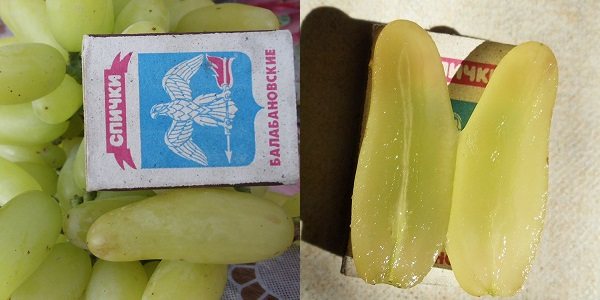

Super berries "of the century"
The color of the berry is greenish, in a state of full ripeness it becomes golden. If you do not cut the grapes and leave them in the sun, the berries will take on an amber hue.
With timely collection, even in conditions of high humidity, the berries do not crack or crumble.
Reference! Senteniel Seedles is renowned for being completely pitted and therefore perfect for making raisins. In Russia, such seedless varieties are called raisins, and in America - sidles.
Taste qualities
The pulp is tender and sweet.The sugar content is not too high - 14%, but in combination with a slight acidity, the taste of the berry is balanced, pleasantly sweet without sugary. Some connoisseurs talk about the nutmeg flavor of the "century", others find notes of tea rose in it. All these flavor nuances are given to the grapes by the soil on which they were grown.
Landing technology
It will take a certain amount of time and go through certain stages to get the crop, including choosing a seedling, preparing the soil for planting, caring for the plant and a successful wintering. The first return of fruits can be expected in the 3rd year, so a certain cycle of work will need to be completed annually.


Sunny areas are suitable as a place for permanent cultivation; in shaded areas, yield indicators decrease significantly. Planting can be done in spring or fall. Before planting, the roots of the plant are disinfected and treated with growth stimulants for better survival. Plantings are formed in a straight line, keeping the distance between seedlings and rows. Planting along the walls of buildings will protect the plant from the wind, but at the same time an indent of 1 m is required from the foundation.
When planting in heavy soil, the depth of the hole should be at least 80 cm deep and 60 cm wide. Drainage will help to increase the properties of moisture transmission and air permeability of the soil; for this, rubble, broken brick or sand are used. Mineral fertilizers and humus are added to the hole on top of it. When planting, root shoots are evenly distributed, covered with fertile soil, tamped and watered.
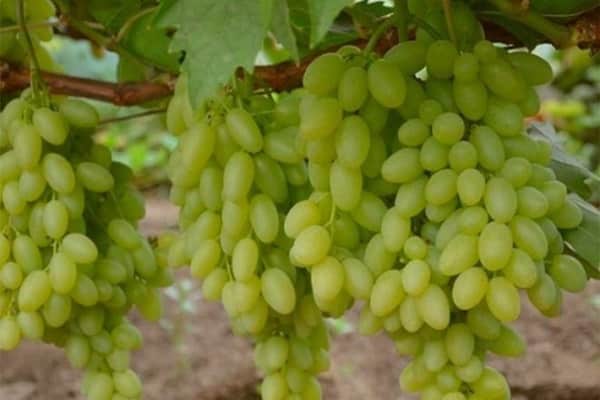

Comparison with analogues
For more understanding, it is very important to compare the variety with its closest seedless competitors. By the way, the "century" has quite a few of them. Let's consider some of them.
| Sign | Variety | |||
| Century | Kishmish No. 342 (Hungarian) | Aleshenkin | Veles | |
| Ripening period | 110-120 days | 110 - 115 days | 100 - 120 days | 100 - 110 days |
| Frost resistance | Down to -23 ° C | -26C | -25C | -23C |
| Productivity from a bush | 20-30 kg | 20 Kg | Up to 25 kg | 30-50 kg |
| Bunches | up to 1.5 kg | 300 - 500 g | 300 g to 1.5 kg | 600 g - 2 kg |
| Taste | Moderately sweet and mild | Muscat flavor | Harmonious, sweet with notes of nutmeg | Muscat |
| Color | Green yellow | Green-golden | Amber yellow | Pink - amber |
| Disease resistance | Average | High | Below average | Above average |
| Shelf life | Few weeks | 1 month | 1 month | Up to 3 months |
| Sugar content | 13-14% | 19-21% | 17 – 20% | 17 – 22% |
| Acidity | 5-7 g / l | 6-8 g / l | 3 - 6 g / l | 5 - 7 g / l |
Productivity and frost resistance


Ripening period varies from 120 to 125 days. Reaches full maturity in mid-August. Productivity of this variety: medium, stable. It can be stored on the vine for a long time without losing its sweetness in taste. At the same time, the berries are saturated with a greenish-yellow color, the sugar content accumulates, the variety becomes sweeter.
When ripe, berries are not subject to crumbling and decay. The fruits are not susceptible to sunburn. But during ripening, with prolonged exposure to abundant direct sunlight, brown specks and dots may form on the berries. With heavy precipitation, it does not crack.
After harvesting from the bushes, it has a short storage. Frost resistant up to minus 23 degrees Celsius. Mature bushes of this variety do not need shelter for the winter. Krasa Severa, Pink Flamingo and Super Extra are also particularly frost-resistant.
Young cuttings, which are not more than 6 years old, should be covered in winter to avoid frostbite of the root system.
Growing features
To obtain the planned harvest, it is necessary to properly and timely care for the grapes: cut the bushes and treat them against diseases and pests.
Pruning
For the "century" in order to increase the yield, pruning of shoots is recommended, since the shoots at the base of the bush bear little fruit, and the main plant is diverted to their development. Young shoots are cut with pruning shears completely, and lignified shoots - 2/3, away from the main fruiting shoot.
Diseases and pests
All experienced growers agree that the "century" must be treated against fungal diseases. The variety is most susceptible to mildew, oidium. Shows the best resistance to gray rot.
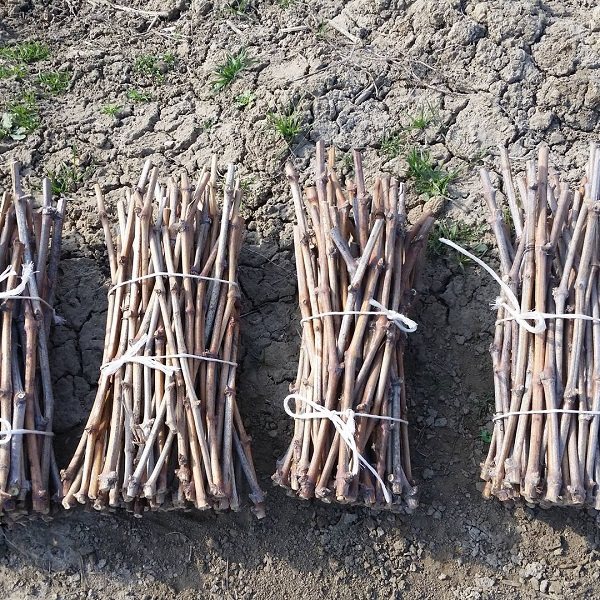

Harvesting shanks for further germination
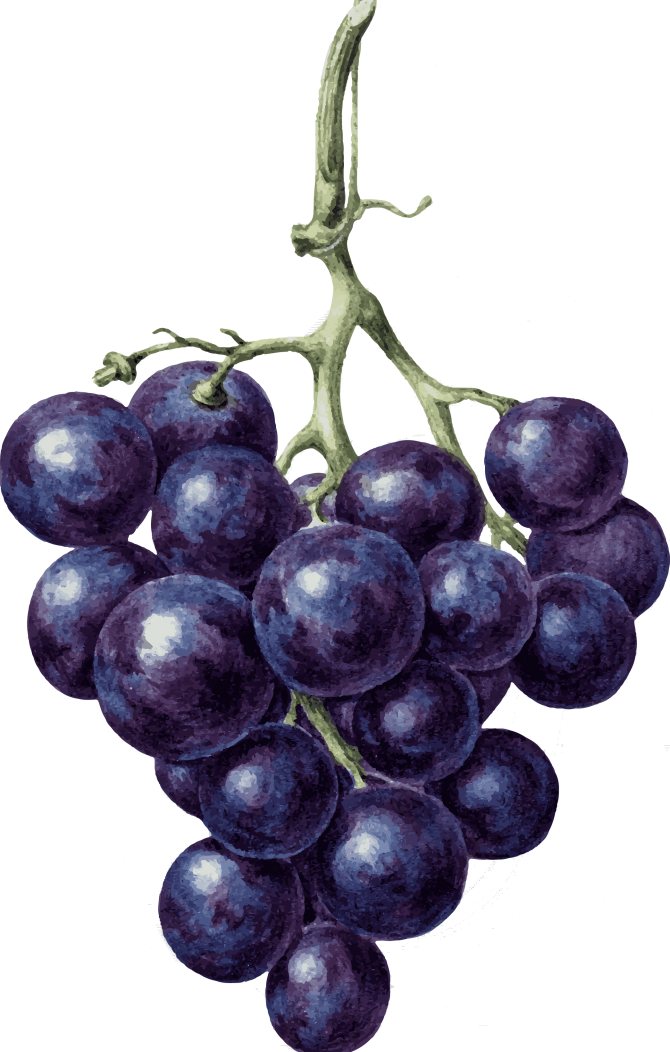

Important! Leafy phylloxera can become a real scourge of grapes. This little aphid can kill the entire vineyard. The only way to protect the vine from this scourge is to use a phylloxera-resistant rootstock.
Frost resistance
"Century" is suitable for cultivation in the southern regions, because the extreme values of winter temperatures that grapes can withstand are in the range of -23 ° C.
But in the south, the vine is covered for the winter. Late frosts pose a danger to blossoming buds.
How long can a crop last?
The variety is perfect for making raisins. Fresh is not stored for a long time.
Regions
Grapes thrive in hot countries, in the southern states of America. You can find it in the vineyards of Moldova. In Russia, the regions of its growth are the center and south of the country.
How to plant grapes
Successful crop cultivation largely depends on the quality and composition of the soil on the site. The ideal option is black soil, sandstones tend to freeze, which will destroy thermophilic grapes, and clay soil does not allow moisture and air to pass through well. Heavy soils are pre-fertilized and "diluted":
a) loam (per m²):
- 2-3 buckets of river sand;
- 2 buckets of peat;
- 0.5 buckets of compost;
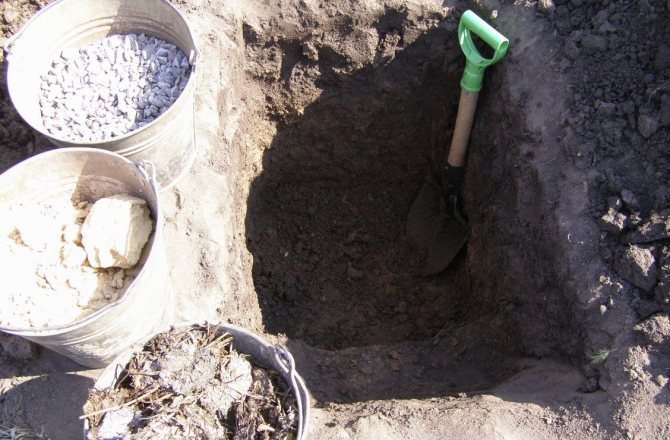

b) sandy loam soil (per m²):
- 3 buckets of black soil;
- 1 bucket of peat;
- 4 kg of manure.
Did you know? According to the New Year's custom, in Spain, to the chimes, you need to eat 12 berries, one for each beat. In this case, you can make 12 wishes.
Choosing a seat for landing
For the vineyard, they choose flat or slightly elevated areas that are not flooded during the spring thaw. The location of groundwater, taking into account the deep root system, is not less than 2.5 m to the soil surface. The distance from the house and outbuildings or stone fences is at least 1.5 m. The rows of the plantation are formed in the direction from south to north for maximum sunlight.
Selection of seedlings
Planting is carried out with green and lignified cuttings. Criteria for choosing a healthy seedling:
- cut roots should be white;
- the presence of at least 3 root shoots (on green seedlings);
- the presence of a green branch up to 20 cm (in a lignified cutting);
- bark of a uniform color, without damage and suspicious spots and tubercles;
- the presence of 3-4 eyes that do not peel off and do not crumble when touched.
Video: How to choose the right grape seedling
Landing time and scheme
Lignified cuttings are planted in spring (April-May) and autumn (October). In summer (June-July) green vegetative shoots are planted. Landing scheme and technology:
- Before planting, the roots are shortened and disinfected, then dipped in a clay chatterbox.
- The size of the pit is 80x80x80 cm.
- The distance between the holes is up to 3 m.
- Drainage (broken brick) is placed at the bottom of the pit.
- The soil, which was dug out, is mixed with fertilizers (humus - 3 buckets, potassium salt - 100 g, superphosphate - 200 g, wood ash - 2 kg).
- The prepared mixture is partially poured onto the drainage and spilled, it must be tamped down so that it sags well.
- A seedling is placed on a hill of earth, the roots are spread and sprinkled with soil.
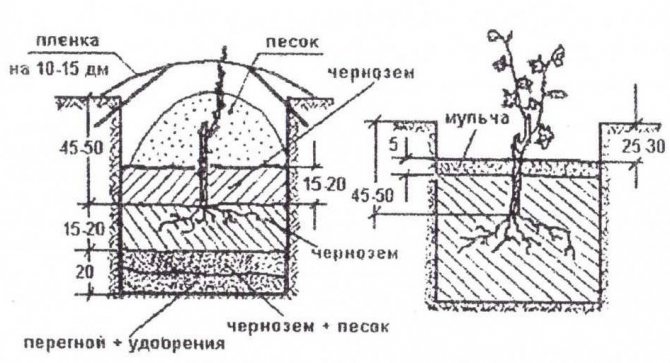

Photo
Below are photographs of the "century" variety.
Benefits of the variety
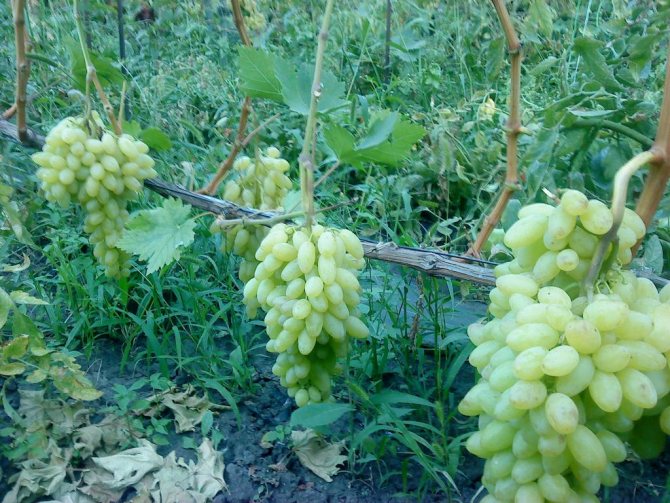

Grapes of universal purpose Kishmish Century has a lot of advantages, the description of which should be paid special attention to when deciding on planting a variety on your site.
The advantages of this hybrid are, first of all, in the fact that, subject to the rules of cultivation, simple care and annual feeding with fertilizers, it gives consistently high regular yields. Its large clusters have an attractive appearance and can easily be transported, and the berries have high taste properties. This hybrid is great for drying to a raisin state.
The variety is characterized by high resistance to most dangerous grape diseases (mildew, oidium, gray rot) and good frost resistance: its buds, sleeping in the eyes, can withstand cold temperatures down to -23-25C.
Adult plants do not need to be covered for wintering, but for young bushes, shelter is recommended for 3-6 years after the seedling is rooted.
Despite its foreign origin, such a seedless grape variety as Kishmish Century, has taken root well in Russia and is naturally in demand among both experienced farmers and novice gardeners, receiving positive reviews from both sides. Being a high-quality universal grape form in application, this variety combines a lot of advantages and, undoubtedly, will become an adornment and pride of any vineyard.
Testimonials


Of all my raisins, by far the best. In appearance, taste, marketability - out of competition. Cons - I would like more stability (I have enough oidium) and not everything is good with the ripening of the vine, even where the oidium did not walk. I don't want to look for the minuses anymore, because there are more pluses. Anatoly
I don’t know who and how, but for larger berries I thin out the berries in bunches. I remove parts of the young bunch after flowering and ringing. Evgeny
Wintering
For wintering in regions with a cold climate, a young plant needs to provide shelter. Protective insulation is necessary for plants under 4 years of age. The further decision on the formation of the structure is made on the basis of how low the temperature indicator in winter drops. Shoots are able to withstand a decrease of up to -25 C.


To prepare for winter, the shoots are removed from the supports and laid horizontally. Some gardeners form a 20 cm protective layer of moss, fallen leaves or sawdust. Others are additionally covered with triangular structures or agrofiber on arcs. It is important for the successful wintering of the plant to prevent the effect of "overheating" of the grape shoots.
disadvantages


During long-term storage, grapes are separated from the bunch for a century, so the harvest needs to be quickly realized.
Winegrowers disagreed, but the grapes have their drawbacks:
- Poor transportability. A thin, delicate skin cannot keep the integrity of the berry for a long time. Despite the fact that it never cracks, it “leaves” its bunch, that is, it crumbles. Naturally, grapes in bulk can no longer be expensive, they have to be sold for a pittance, regardless of their size;
- Rapid loss of appearance... After lying for some time, it begins to acquire an intensely dirty yellow, and then brown color. Winegrowers note that this does not affect the taste, but significantly spoils the presentation and it is already necessary to persuade the buyer to try such grapes;
- Sensitivity to microscopic fungi.
Sustainability
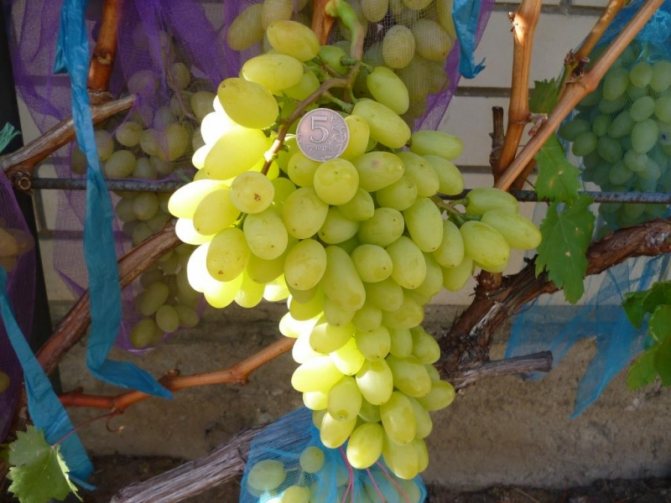

Century grapes have good resistance to mildew and powdery mildew.
If the berry has a fairly good resistance and is not damaged by fungi, then the situation is different with the vine.
The microscopic, pathogenic fungus Botryodiplodiatheobromae is very harmful to this cultivar. Without immunity, the vine cannot resist the introduction of this pathogen into its cells. As a result, the wood becomes thinner, aging does not occur and it has to be cut.
Growers who can already characterize this variety argue that the variety requires increased attention and processing in terms of combating fungal diseases.... Those who have a clear processing schedule and adhere to it every point do not see any problems in growing this variety.
"Century" in processing


Century grapes are good as a dessert.
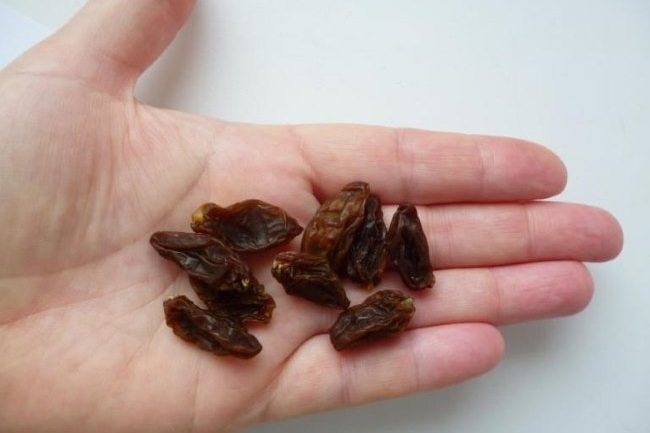

Kishmish A century has been used to make raisins.
Planting raisins implies not only a pleasant dessert, but also the making of raisins.
With the advent of electric dryers, the preparation of this product has become affordable and simple.
It is not difficult to dry the grapes of the "Century" variety... It behaves very well in processing, and the raisins are clean, balanced, of excellent color.
As a disadvantage, we can note the lack of a special, long aftertaste, which is inherent in rich nutmeg varieties.




